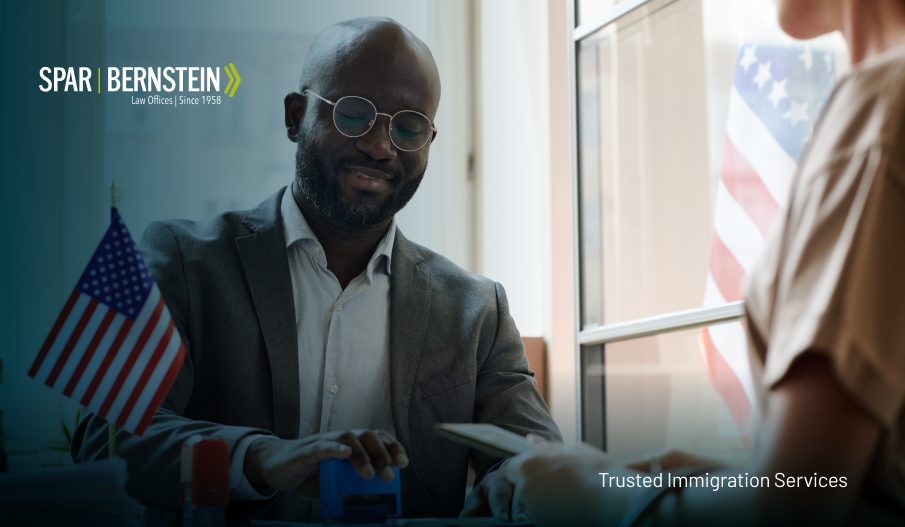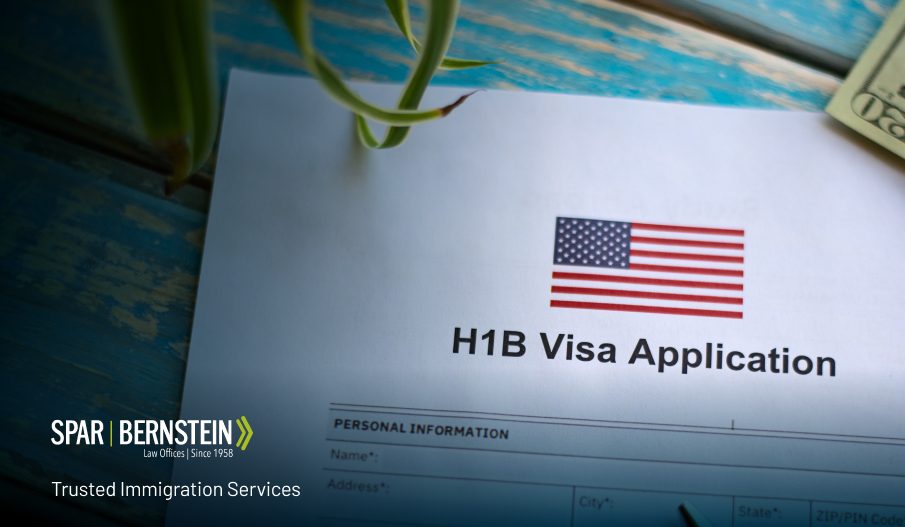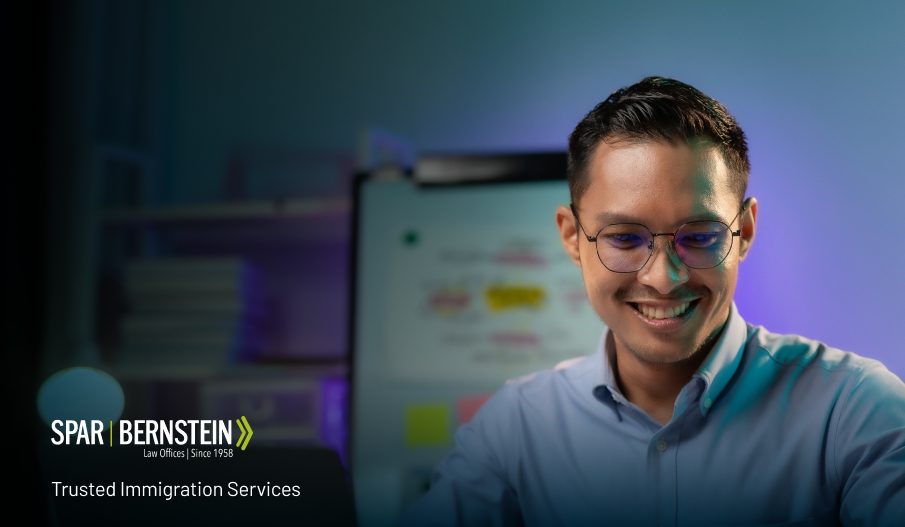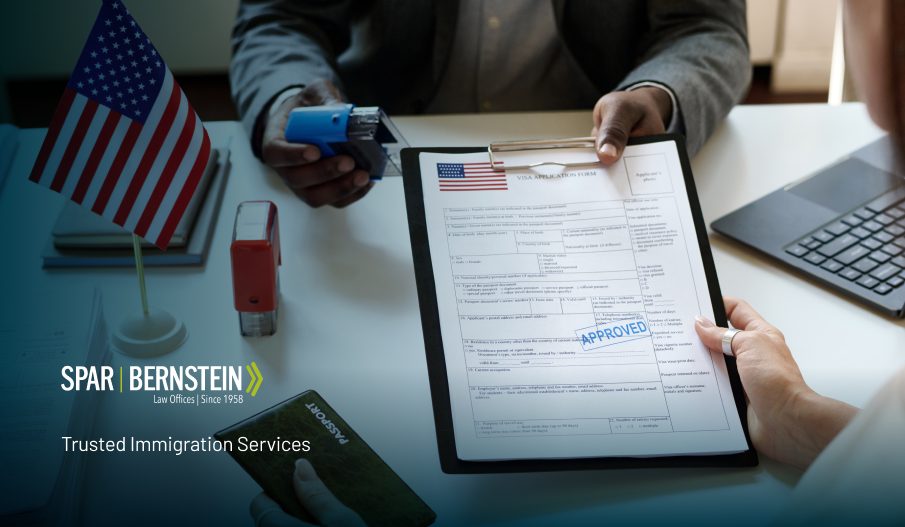

EB-1 Visa: Key Takeaways
- The EB-1 visa is designed for outstanding professors or researchers, multinational executives or managers, and individuals with extraordinary abilities
- It allows employers to sponsor top global talent faster than other categories as it skips the PERM labor certification
- The EB-1 process involves gathering detailed evidence, filing the I-140 petition, and completing adjustment of status or consular processing
- The EB-1 timeline can vary by category, with Form I-140 processing taking between 16 and 20 months
You’ve finally found the researcher or executive that can make a difference to your business, singling your company out.
But now you’re up against strict timelines and immigration hurdles.
The EB‑1 visa can bring extraordinary talent to your U.S. team faster than other options when you know the right steps.
In this guide, you’ll learn:
- What the EB-1 visa is
- Which category is right for your employee, and what are the respective requirements
- The steps in the process to file a petition
- How long the processing of your petition takes
EB-1 Visa Overview
The EB-1 visa is an employment-based immigrant visa that falls under the first preference category, Priority Workers.
It offers employment to individuals with specific qualifications whose entry can benefit the U.S. workforce.
The EB-1 visa bypasses the complex Permanent Labor Certification (PERM) process, which is time-consuming and includes significant documentation.
With an EB-1 visa, you can hire top-tier talent, skip lengthy certifications, and help them secure a Green Card faster, giving you a real competitive edge.
EB-1 Visa Categories & Requirements
There are three distinct EB-1 categories.
1. EB-1A: Extraordinary Ability
This group includes individuals who have outstanding achievements in arts, sciences, education, business, or athletics. For example:
- Internationally recognized scientists who have major awards
- Renowned business consultants featured in major publications
- Olympic medalists
EB-1A visa applicants must:
- Provide evidence of sustained national or international acclaim: Pulitzer, Oscar, Olympic Medal, and more.
- Meet at least three out of ten specific criteria by the U.S. Citizenship and Immigration Services (USCIS).
- Prove they’ll keep working in their field of expertise.
EB-1A applicants don’t require a job offer or employer sponsorship.
2. EB-1B: Outstanding Professors & Researchers
The EB-1B visa is for professors or researchers who have achieved international recognition for exceptional work in their academic field, like a Nobel Prize winner joining a university to head a research team.
EB-1B visa requirements include:
- Minimum three years of experience in teaching or research
- International recognition of achievements
- Meeting at least two out of six USCIS criteria
- Coming to the U.S. for a tenure-track teaching job or similar research role at a university, college, or private research employer
No labor certification is required, but the applicants need to show a job offer from an employer.
3. EB-1C: Multinational Executives Or Managers
The EB-1C visa allows multinational companies to transfer key executives or managers to their U.S. operations.
To qualify for an EB-1C visa:
- Your U.S. company must have a valid connection to the foreign entity you are transferring the employee from, such as a parent, subsidiary, branch, or affiliate.
- You must have been doing business for at least one year.
- The employee must have worked abroad in a managerial or executive role for at least one of the past three years and be coming to the U.S. to work in a similar role.
PERM labor certification is not required, but the U.S. employer must offer the employee a qualifying executive or managerial position and file a sponsoring petition.
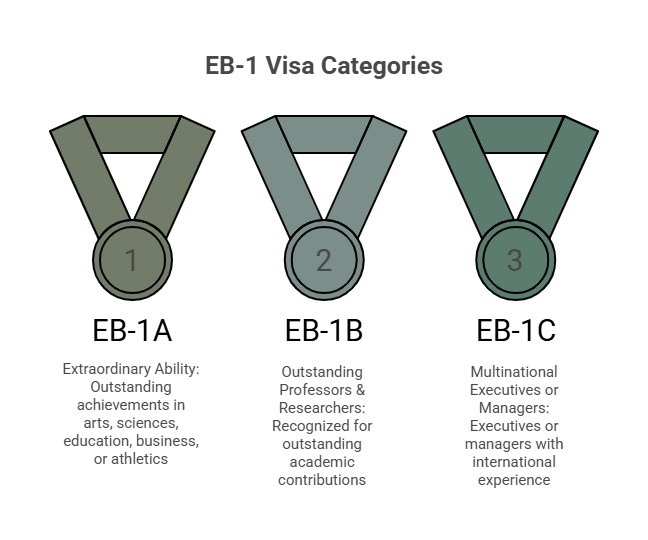
EB-1 Visa Application Process
As an employer, you’ll typically need to go through these steps:
1. Evaluate Eligibility
Confirm that your company and the candidate meet the EB-1 criteria. If you’re unsure, ask an experienced immigration lawyer to review your case.
2. Gather Supporting Evidence
What does this evidence look like? Here are a few examples that USCIS expects:
- Evidence the sponsored employee has won major prizes or awards for their work
- Evidence of membership in associations that only accept people with outstanding achievements
- Articles or publications written by others about their work
- Evidence they’ve made original scientific or research contributions
- Evidence of written books or articles published in well-known journals
3. Prepare The Immigrant Petition
Fill out Form I-140, Immigrant Petition for Alien Worker, and mail it to the correct USCIS address, along with the supporting evidence.
What happens next?
The process then moves to the applicant, who can either apply for an adjustment of status or go through consular processing
- If the candidate is already in the U.S., they must file Form I-485, Application to Register Permanent Residence or Adjust Status, to change their immigration status to permanent residents once the priority date is current.
- If the candidate is abroad, they must complete consular processing through the National Visa Center (see NVC processing time) and attend an immigrant visa interview once the priority date is current.
Once approved, the employee and their eligible family members receive lawful permanent resident status.
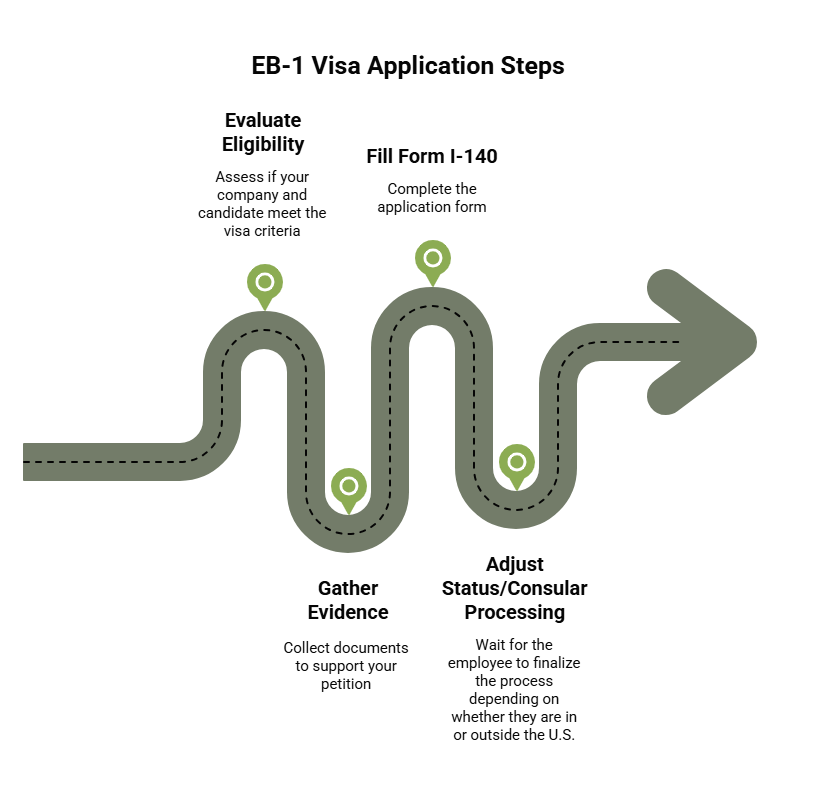
EB-1 Visa Processing Time
The time for processing Form I-140 can vary depending on the EB-1 visa category under which you’re filing:
- For applicants with extraordinary abilities: Between 14 and 16 months.
- For outstanding professors and researchers: Between 18 and 20 months.
- For multinational executives and managers: Between 13 and 18 months.
Make The EB-1 Visa Process Easier With Spar & Bernstein
At Spar & Bernstein, we’ve helped hundreds of employers navigate the complex EB-1 visa steps. What can we do for your company?
Our experienced team of business immigration attorneys will review your employee’s background, job duties, and your company’s structure to confirm they meet the strict EB-1 requirements.
We’ll help you collect needed documentation, prepare and file your petition, and assist the candidate with adjustment of status or consular processing.
If your petition faces challenges, our team will pursue motions or appeals, protecting your company’s interests.
EB-1 Visa: FAQs
Why should I consider sponsoring an employee for an EB-1 visa?
The EB-1 visa helps you attract top global talent that can give your business a competitive edge. Compared to other employment-based visas, it offers a faster path to permanent residency.
Do I need to complete PERM for an EB-1 employee?
No, you can skip the PERM labor certification entirely, so you’ll deal with fewer documents and a faster timeline.
What’s my role in the EB-1 visa process?
If you’re sponsoring someone under EB-1B or EB-1C, your job is to file Form I-140 and back it up with documents proving your company and the position qualify.
Can I sponsor an EB-1 employee if my business is small or medium-sized?
Yes, you can sponsor an EB-visa applicant provided you can prove your business is legitimate, financially stable, and meets USCIS criteria for the position.
How can a lawyer help with EB-1 cases?
A knowledgeable immigration lawyer will ensure:
- Your petition is complete.
- You submit strong evidence.
- USCIS requests are addressed promptly.
Can I use premium processing for all EB-1 cases?
Premium processing is available for EB-1A and EB-1B, but not for EB-1C category. To request premium processing, use Form I-907, Request for Premium Processing Service.



